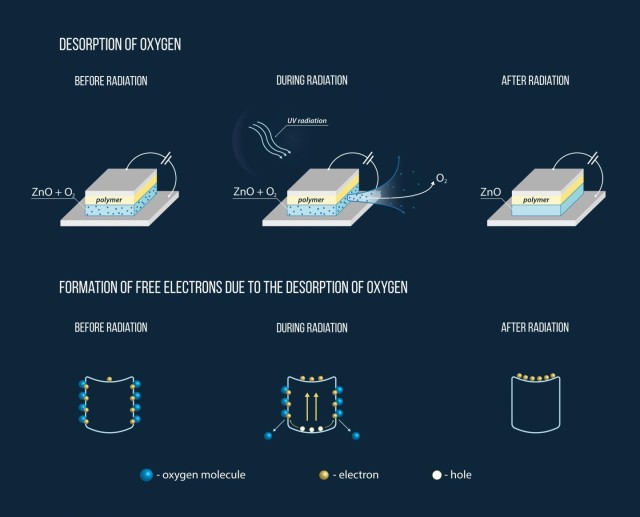A team of researchers recently found a new way to enhance the bandwidth of polymer-based photo detectors. Usually, devices like these are sensitive to a highly narrow light bandwidth. However, this can be resolved with an easy ultraviolet treatment that can enhance the photo detector bandwidth. It can also help in achievement of a spectral response from UV to near-infrared light. The research in this direction began with a polymer based, organic photo detector that makes use of zinc oxide nanoparticles in form of anode interfacial layer. Post this; they exposed the photo detector to 350 nm, 30 uW/cm2 light for half a minute. The discovered that an easy UV treatment enhanced photo response of this device to dramatic levels.
A performance scale of photodetectors known as external quantum efficiency (EQE) scales the portion of incident photons that are needed to produce a single electron. Prior to this UV treatment, the polymer based-based photo detector possessed an EQE of 30 percent which means it consumed three photons to produce a single electron. After UV treatment, the same photo detector had an enhanced EQE of 140, 000 percent which means a single photon is capable of producing 14, 000 electron.

The researchers gave credits for this huge improvement to presence of ZnO nanoparticles. In a stereotypical manufacturing process of organic photo detectors, the oxygen atoms from molecules of ZnO detach as well as capture electrons which mean they can’t be used for charging carriers. These researchers explain that a UV treatment of this kind frees up a few other electrons those results in large scale improvement of photo detectors performance. The backside of this story is that UV treatment enhances the dark current which means amount of noise that is produced from this process increases considerably.
The team plans to tackle this problem in a short while. Vadim Agafonov, the member of this team, says, “There is a lot of demand for photo detectors that are sensitive to a wide range of frequencies, but they are difficult to design. It’s hard to find the right materials, because the substances that permit ultraviolet light tend to be nontransparent to infrared radiation, and vice versa. We found a way to ‘broaden’ the spectral response of photo detectors…You can thus convert a polymer-based photo detector into a highly sensitive broadband device. The process itself is quick, cheap, and efficient, which is important for practical applications.”
Filed Under: News


Questions related to this article?
👉Ask and discuss on Electro-Tech-Online.com and EDAboard.com forums.
Tell Us What You Think!!
You must be logged in to post a comment.